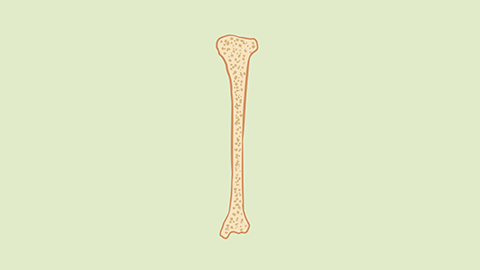Why do babies have more bones than adults?
Generally speaking, the reason why infants may have more bones than adults could be due to factors such as immature skeletal development, birth adaptability, multiple epiphyseal dysplasia, fibrous dysplasia of bone, multiple myeloma, and other conditions. Symptomatic treatment such as general treatment or medication may be needed. If there are any discomforts, it is recommended to seek medical advice promptly and undergo corresponding treatments under a doctor's guidance. Detailed explanations are as follows:

1. Immature Skeletal Development
At birth, an infant's skeleton has not fully matured and consists of a mixture of cartilage and bones, as well as some sesamoid bones. These incompletely developed bones gradually harden into solid bones or remain in a cartilaginous state during growth, resulting in a relatively higher number of bones in infants. No special treatment is required. Parents should monitor the infant's growth and development, provide adequate nutrition and appropriate physical activity to promote healthy bone development.
2. Birth Adaptability
During delivery, an infant must pass through the birth canal; therefore, the bones have not yet fully fused at birth to allow for the necessary flexibility during the birthing process. This is a result of natural biological evolution, facilitating a smoother delivery. No special treatment is required. Parents should observe changes in the infant's head shape and avoid unnecessary worry or inappropriate measures.
3. Multiple Epiphyseal Dysplasia
Multiple epiphyseal dysplasia is caused by gene mutations leading to abnormal development of the epiphyses, resulting in additional bone structures during skeletal growth, increasing the number of bones. It may be accompanied by limb deformities and limited joint mobility. It is recommended to follow medical advice to use medications such as zinc sulfate tablets, amniotic polypeptide zinc sulfate tablets, and metandienone tablets to alleviate symptoms.
4. Fibrous Dysplasia of Bone
Fibrous dysplasia of bone may be related to abnormal proliferation and differentiation of mesenchymal cells caused by gene mutations. Normal bone tissue is replaced by fibrous tissue, leading to abnormal bone structure. In some cases, additional bone structures are formed, making the number of bones appear increased. Symptoms may include bone pain and increased susceptibility to fractures. It is recommended to follow medical advice to use medications such as ibuprofen tablets, diclofenac sodium sustained-release tablets, and piroxicam patches to alleviate symptoms.
5. Multiple Myeloma
Multiple myeloma may result from interactions between genetic factors, environmental factors, immune dysfunction, and other conditions. Plasma cells produce large amounts of abnormal proteins that damage normal bone tissue. During bone repair, additional bone structures may form, leading to an increased number of bones. Symptoms may include bone pain, anemia, and kidney damage. It is recommended to undergo treatment under a doctor's guidance using medications such as bortezomib injection, thalidomide capsules, and lenalidomide capsules.
Parents should monitor the infant's growth and development regularly and provide proper nutrition to support healthy skeletal development.
References
[1] Bai Xueshan, Yang Liya, Teng Li. Comprehensive treatment strategies for craniofacial fibrous dysplasia [J]. Chinese Journal of Aesthetic and Plastic Surgery, 2024, 35(09): 572-574+577.
[2] Kuang Rongbin, Wang Huan, Pi Chaojun, et al. A case report of multiple fibrous dysplasia of the tibia [J]. Chongqing Medicine, 2018, 47(03): 426-428.




